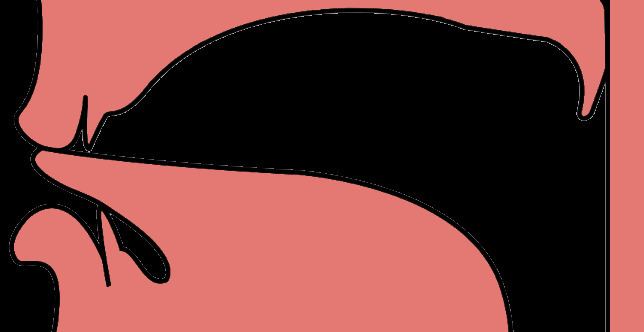 | ||
Linguolabials or apicolabials are consonants articulated by placing the tongue tip or blade against the upper lip, which is drawn downward to meet the tongue. They represent one extreme of a coronal articulatory continuum which extends from linguolabial to subapical palatal places of articulation. Cross-linguistically, linguolabial consonants are very rare, but they do not represent a particularly exotic combination of articulatory configurations, unlike click consonants or ejectives. They are found in a cluster of languages in Vanuatu, in the Kajoko dialect of Bijago in Guinea-Bissau, and in Umotína (a recently-extinct Bororoan language of Brazil), and as paralinguistic sounds elsewhere. They are also relatively common in disordered speech, and the diacritic is specifically provided for in the extensions to the IPA.
Linguolabial consonants are transcribed in the International Phonetic Alphabet by adding the "seagull" diacritic, U+033C ̼ COMBINING SEAGULL BELOW, to the corresponding alveolar consonant, or with the apical diacritic, U+033A ̺ COMBINING INVERTED BRIDGE BELOW, on the corresponding bilabial consonant.
Sound shifts
In Vanuatu, some of the Santo–Malekula languages have shifted historically from labial to dental consonants via an intermediate linguolabial stage, which remains in other Santo and Malekula languages. In Nese, for example, labials have become linguolabial before nonrounded vowels; in Tolomako, this has gone further, so that *bebe 'butterfly' (/t̼et̼e/ in Tangoa, above) has become /tete/ in Tolomako, and *tama 'father' (Tangoa /tan̼a/) has become /tana/.
